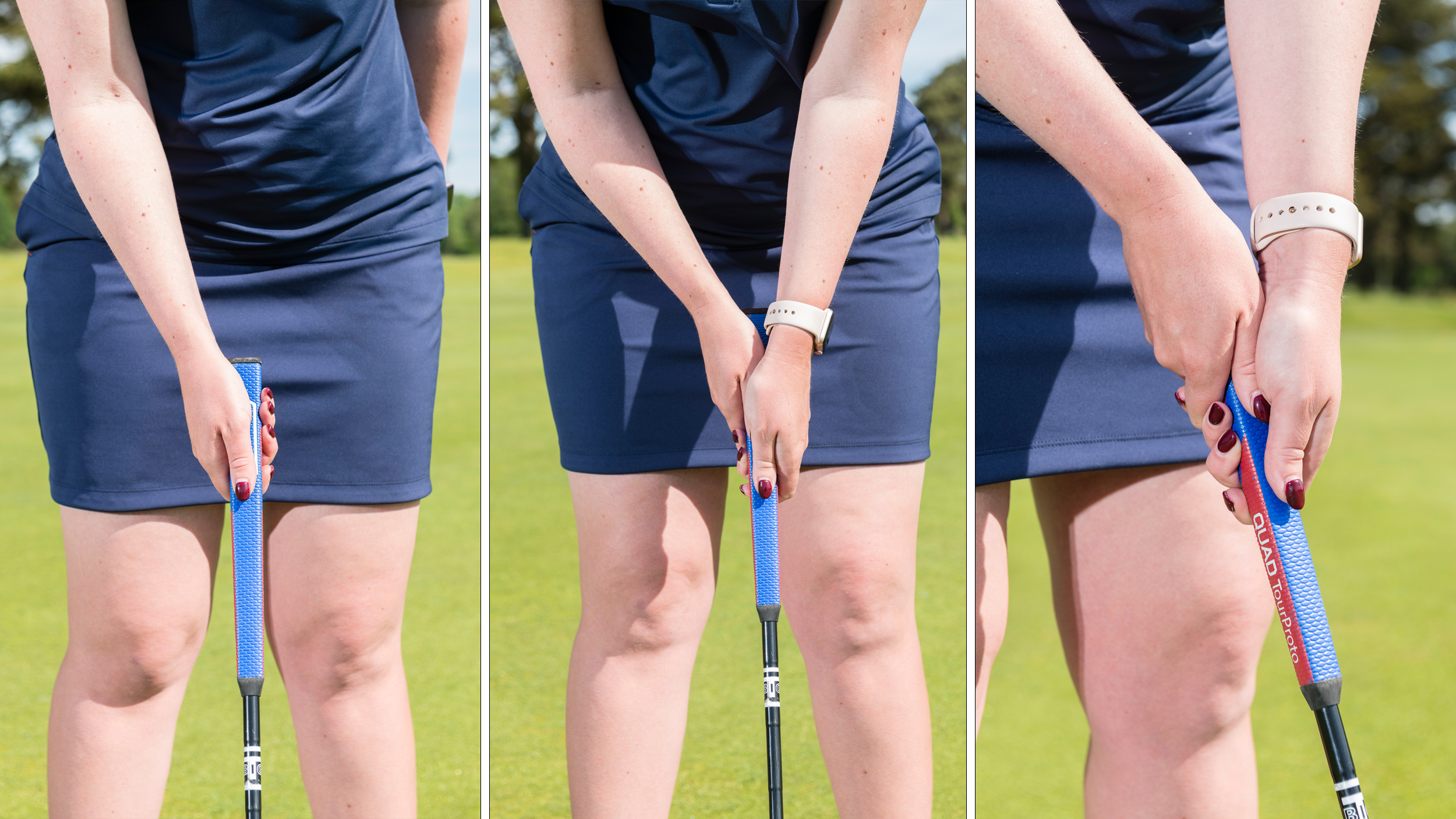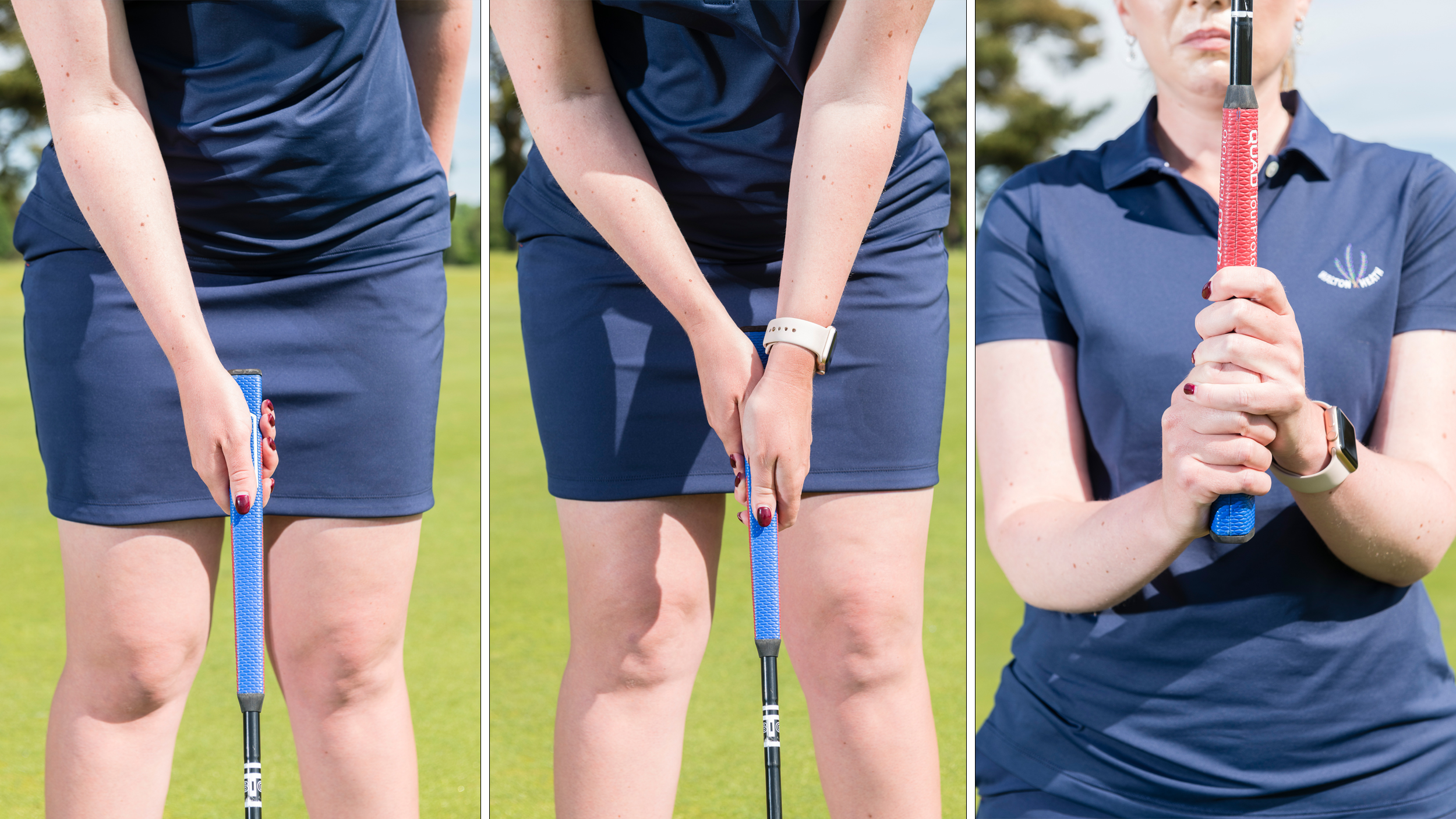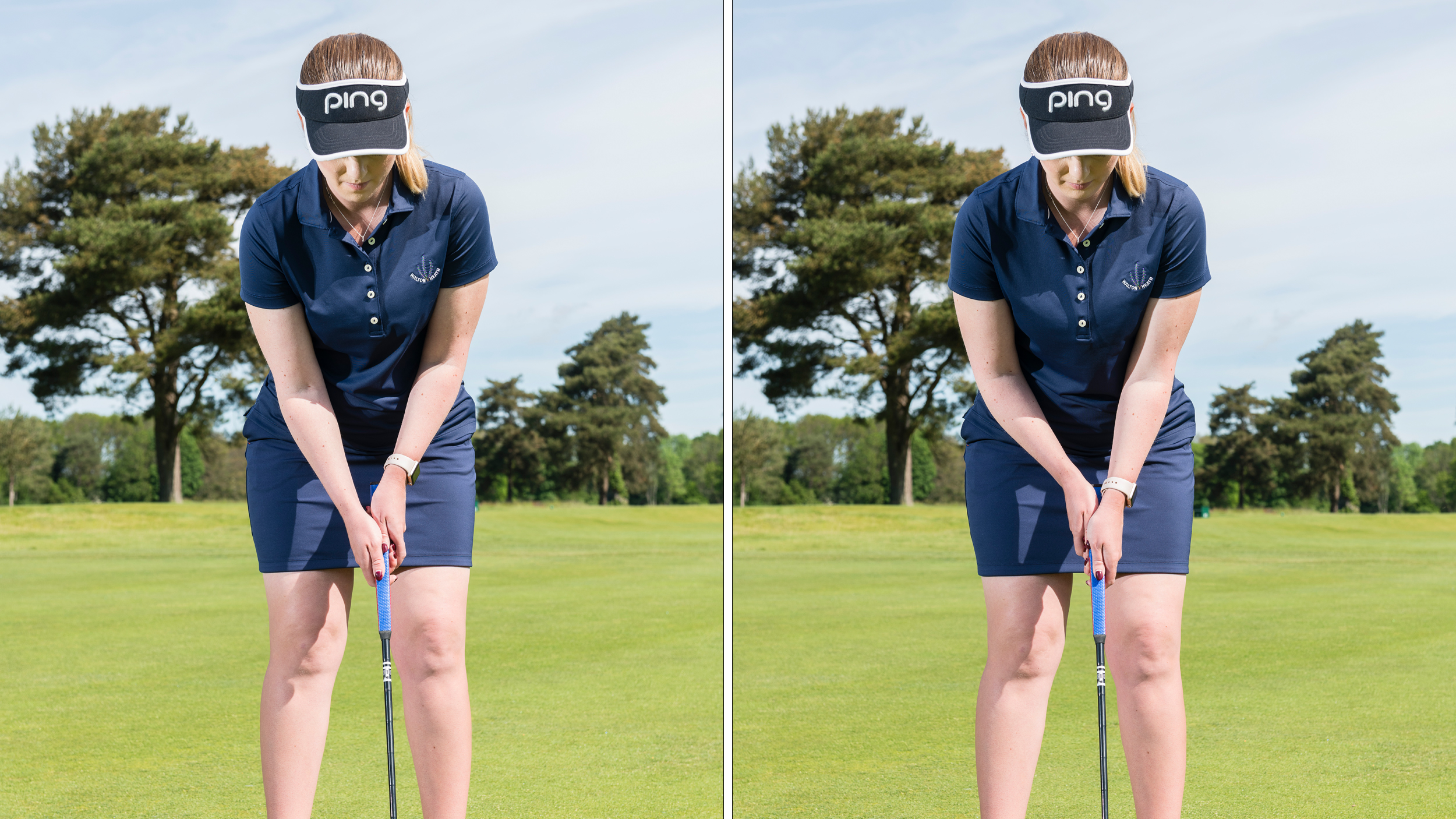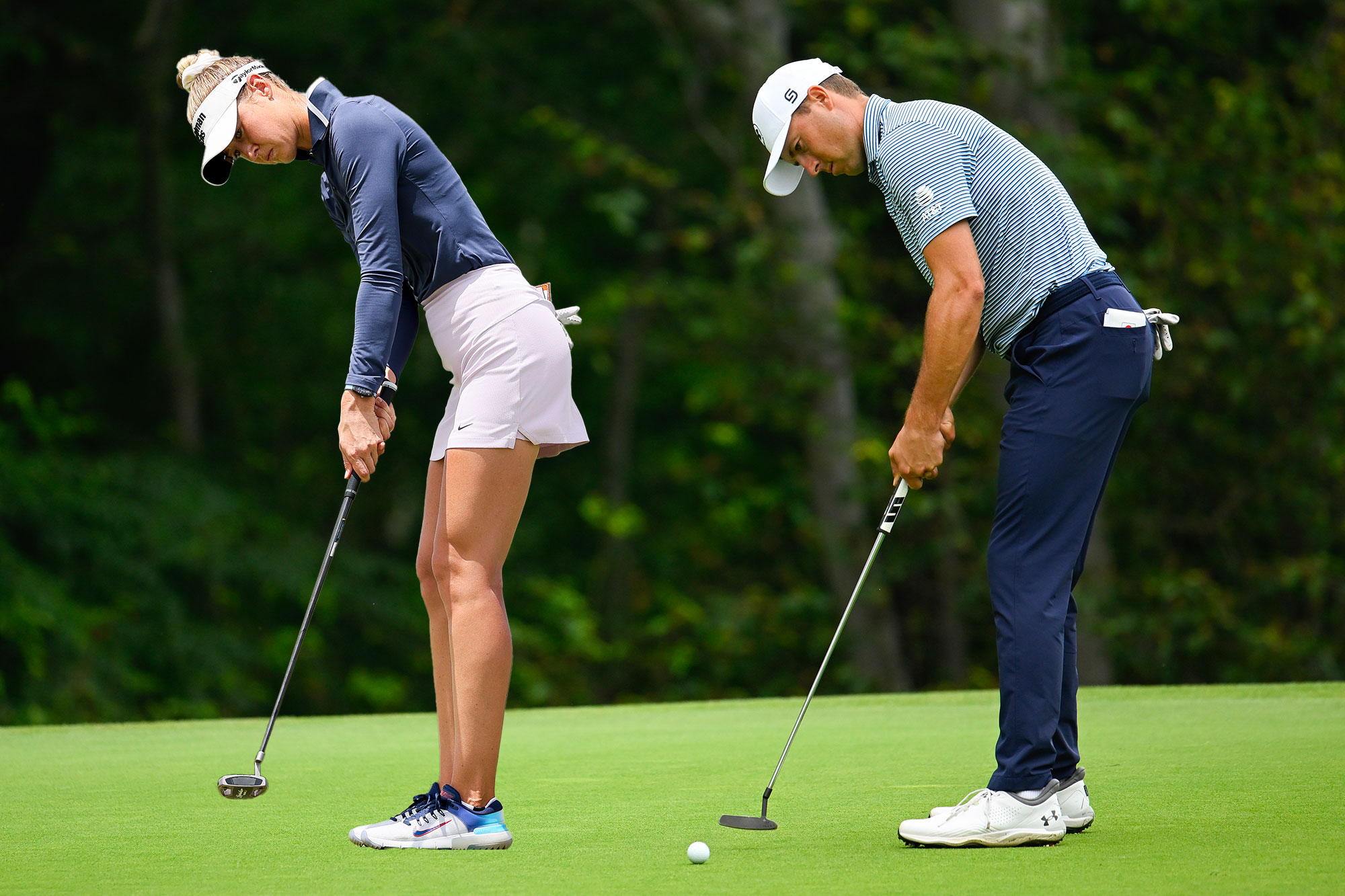
The left hand low putting grip has been used by some of the greatest names in the game, including multiple Major winners like Jordan Spieth, Nelly Korda and even Jack Nicklaus.
When it comes to learning how to grip a putter, there are so many options. Some like to go with the conventional style, while others opt to copy World No.1 Scottie Scheffler with the claw grip, but the left hand low option is as good as any.
Like all the best putting tips, nailing a grip change takes time and practice. So, in order to give you the best chance of firing up the flatstick, we asked Golf Monthly Top 50 Coach Jo Taylor to break down the technique and explain everything you need to know...
Left Hand Low Putting Grip: Step-By-Step Guide
1. Grip
This grip is very straightforward, and is therefore easy to try even if you have no prior experience. Your right hand goes onto the top of the grip first, and your left hand sits just under it.
Shift your hands until you get comfortable, but the most reliable method is to have one finger overlapping in the grip (as demonstrated in the image below).
If you feel like there is a little too much movement, or it feels uncomfortable, try a double overlap to get a stronger connection.

2. Square Shoulders
The left-hand-low putter grip has plenty of benefits, including your shoulders being more level. When your shoulders are open at address it will lead to an out to in path.
Having your left hand lower than your right squares the shoulders up, and allows the putter to move straight down the target line.

3. Ball Position
Another key aspect of this style is having the ball position slightly forward of centre, creating some forward shaft lean, which will allow your left shoulder to drive the stroke.
This grip prevents the right hand from becoming too dominant, and with your shoulders more level, you should see more putts drop when it counts.

4. Practice
It is worth saying here that if you have used an alternative putting grip for years, then any switch is likely to take time.
The key is commitment. If you feel that your putting is poor, then a totally new feel is a good way to reset your mind and provide the foundation for your confidence to grow.
However, don't expect it to transform your game overnight. Any change in the norm when trying to find the perfect golf grip (long game or short game) will take time.
Use some practice putting drills to develop your feel for pace control in particular. The more putts you hit, the better your instinctive feel for distance control will become.
Above all, allow yourself some wiggle room to make mistakes on the course. By taking pressure off your shoulders, you'll make a bigger improvement far sooner.







